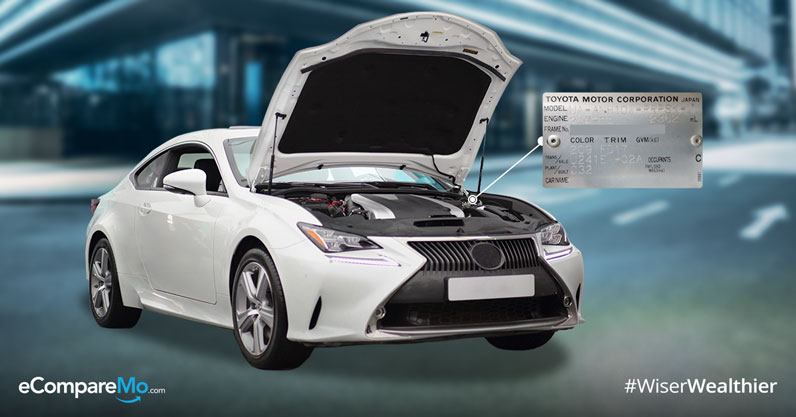Where To Find Your Car’s Vehicle Identification Number—And How To Decode It
4 min readThe Vehicle Identification Number (VIN) plays an important role in every vehicle. It is a set of characters used as an identification code for every registered vehicle.

Think of the VIN like an ID or a birth certificate for cars. Every car has a unique code of their own and it is impossible to come across another car that has the same VIN as yours.
The VIN is used to identify the model and details that are registered to the vehicle. Manufacturers or registration companies use this code to validate the vehicle. This means that they will be able to know the year your car was manufactured, what country it comes from, the original body color, engine size, plant name, and other important identifying marks.
Why should you know your VIN?
1. In case of a stolen vehicle
If your car was stolen, the smartest thing to do is to report your car’s VIN immediately to the police.
Most thieves would quickly change the plate number of the car, but as mentioned earlier, the VIN on a car is unique and it would be impossible to find a double. Knowing your VIN will help make it easier to verify your vehicle.
2. Background check
In the Philippines, it is not unusual to buy a secondhand vehicle from either a trading company or a third party. While most sellers are open to telling you about the history of the vehicle you are trying to buy, some might hide or fudge a few details to make the vehicle look more attractive.
By checking the VIN, you can verify the details of the vehicle, including how old it really is. You can also check if it still has all of its original parts, if it was subject to a recall, and, if you need to replace anything in the future, it makes it easier to find the specific parts that are compatible with the vehicle.
(Read: A Complete Guide To LTO Car Ownership Transfer In The Philippines)
How to check the VIN of your car
Every vehicle has a VIN. The look of it would depend on both the age of your vehicle and the manufacturer.
You should be able to find the VIN on either the dashboard underneath the windshield at the driver’s side, on the door sill, or even on the inside of the engine bay. In older models of cars, it might appear on a metal plate but in more modern vehicles, it is commonly printed on a durable sticker.
Your vehicle’s title should also have its VIN printed on it. Sometimes you can even find your VIN included in your vehicle’s insurance documents.
You should always take note of where your VIN is located. Also, make sure that the VIN found in your vehicle and any identification documents match.
VIN, chassis number, and engine number—what’s the difference?
You might hear a few terms when it comes to car registrations and documents; VIN, chassis number, and engine number.
A lot of people get confused with the VIN, chassis number, and engine number but all these three are used to identify important details under your car.
We’ve already talked about the VIN, so let’s look into what these other numbers are and what they mean.
1. Engine number
The engine number is used to register your car under the Land and Transportation Office (LTO)—usually when you buy a secondhand car. This is a number that is stamped on the engine of your vehicle by the factory that manufactured it.
It is separate from the VIN but provides similar information. If the VIN tells you about your vehicle, the engine number tells you about the engine, when and where it was manufactured, and what type it is.
The engine number can be important when it comes to repairs as it will help your mechanic find compatible spare parts if that’s what is needed.
(Read: 6 Important Things To Check When Buying A Second-hand Car)
2. Chassis number
This is actually related to your VIN as it is the last six digits found on your car’s VIN. A chassis number is used for identifying motor vehicles as well.
The chassis number is usually found at the body of the car. It may be a series of numbers or letter that is stamped on a vehicle by the manufacturer.
In the Philippines, vehicles manufactured by big foreign brands such as Toyota or Honda carry a VIN. But cars that are locally made—jeepneys, for example—don’t have a VIN.
Instead, their main identification marker is the chassis number. As the chassis number is stamped and irremovable, this is what will be used to identify a vehicle instead of a VIN.
The chassis number is required when you register a vehicle with the LTO as well, so in case of theft it will also be used to identify the vehicles true owner.